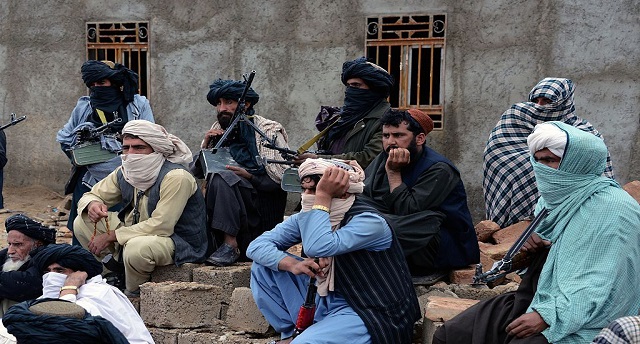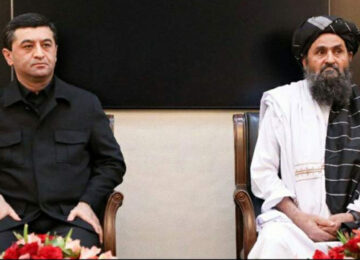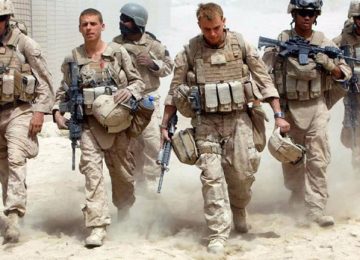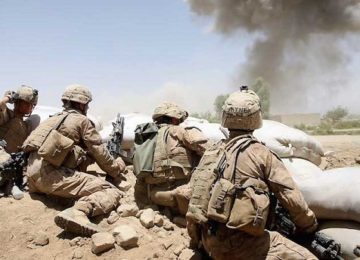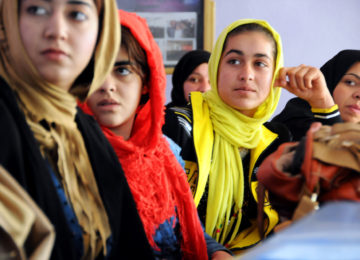An American who helped open secret negotiations with the group calls for them to accept a ceasefire and peace talks with the Afghan government.
Your February 14, 2018, open letter to the American people asked us to “evaluate the future of American forces in light of the prevailing realities” in Afghanistan. I can answer only for myself, as an academic and former American diplomat who has been trying to understand Afghanistan’s realities for thirty-five years. Many Afghans claim that any answer should go not to you but to the Pakistani generals and intelligence operatives who shelter your movement. I disagree. I have interacted with you directly and indirectly since January, 1997, when I chaired a meeting at Columbia University with a delegation you sent to New York to ask for Afghanistan’s seat at the United Nations. I have concluded that your opponents underestimate your independence and abilities. But you may also underestimate theirs.
On Wednesday, the Afghan government will host a second meeting of the Kabul Conference, an effort to begin peace talks, which will be attended by twenty-three countries. The United Nations announced earlier this month that ten thousand Afghan civilians were killed or wounded in Afghanistan in 2017, two-thirds of them in anti-government attacks.
You highlight the civilian casualties inflicted by U.S. air power, the shame of Guantánamo, and the losses suffered by American soldiers and their families. I would cite the thousands of Afghan civilian casualties inflicted by your attacks and suicide bombings. The International Criminal Court opened an investigation into war crimes in Afghanistan last fall. In less than three months, Afghans submitted accounts of 1.17 million atrocities. I prefer to respond here to your appeal for dialogue.
Few would disagree with your call “to solve the Afghan issue through peaceful dialogues,” if they thought it were possible. On January 29th, after your organization used a car bomb disguised as an ambulance to kill nearly a hundred people in Kabul, President Trump did say, “I don’t think we’re prepared to talk right now.” That was an impulse, not a strategy. As you yourself observed on Monday, “the United States has kept the doors of dialogue open for the Taliban.”
The flaw in your call for dialogue is that it is addressed only to Americans, not your fellow Afghans. You accuse Afghans opposing you of “committing treason against our nation,” but the government of Afghanistan, corrupt and divided as it may be, is recognized by every nation in the world—not just Washington and its allies. Your dialogue with the U.S. government cannot replace dialogue with that government and the millions of other Afghans who fear your attacks and your return. Trying to exclude them repeats the mistake the U.S. made by excluding you.
The list of missed opportunities for peace in Afghanistan since 2001 is long. On December 6, 2001, your leaders signed an agreement with Hamid Karzai, who had just been named the chairman of Afghanistan’s interim administration at talks convened by the United Nations in Bonn. You agreed to a truce and handed over the four provinces you still controlled to Karzai’s government. In return, you did not ask for government positions—just an amnesty that would allow you to live in dignity.
The Administration of George W. Bush squandered the chance to involve you in building a new government. U.S. Defense Secretary Donald Rumsfeld announced there would be neither a negotiated settlement nor an amnesty. Steve Coll reveals in his new book, “Directorate S,” that, when some of your leaders tried to participate in the peace process agreed to at Bonn, Vice-President Dick Cheney ordered them imprisoned at Guantánamo or Bagram.
Three and a half years later, with the help of U.S. Ambassador Zalmay Khalilzad, a Taliban delegation again began negotiating an agreement with the government in Kabul. But Khalilzad’s bosses in Washington declined to provide security guarantees to Taliban who joined the peace process. You concluded that you had no alternative but to continue fighting from your safe haven in Pakistan, whose military has supported you for its own reasons. The U.S. rejection of talks made you hostages to the Pakistan military.
By 2007, you felt, as a former Taliban official told me, “strong enough to talk” with the U.S. You established a political commission led by Agha Jan Mu’tasim and sent him to Saudi Arabia, to seek dialogue with Washington. Talks with Riyadh began in 2008 but deadlocked when you rejected preconditions the Saudis tried to impose.
In 2010, when I was working in the State Department for Richard Holbrooke, the U.S. Special Representative for Afghanistan and Pakistan, we learned that a new Taliban representative, Tayyib Agha, had met in Dubai with German diplomats. After consulting with Presidents Karzai and Obama, U.S. officials secretly met Tayyib outside Munich, on November 28, 2010.
Tayyib presented U.S. officials with a Taliban road map for negotiations based on a series of confidence-building measures. The U.S. would release Taliban detainees from Guantánamo and lift sanctions, and the Taliban would publicly state that they were willing to distance themselves from international terrorism and seek a solution through a political process. The Taliban would then open an office in Qatar, from where they would negotiate with the U.S. and “other Afghans,” including the government. Once the office was open, Tayyib suggested, the two sides could declare a limited ceasefire.
The initially secret U.S.-Taliban peace talks continued through 2011, punctuated by deadlocks, leaks, and assassinations. The long delay in reaching talks with Afghan officials fed President Karzai’s suspicions that the country’s internationally recognized government was being marginalized. In December, 2011, the U.S. accepted Karzai’s demand that talks continue only if you spoke to Afghan officials. Despite efforts to find a formula that would enable us to proceed, you suspended the talks in March, 2012.
To break the deadlock, Qatar proposed changing the sequence: open the Taliban office with a statement from the movement distancing itself from international terrorism and supporting a political resolution of the conflict; complete the confidence-building measures with the U.S.; and then meet with Afghan representatives. On April 23, 2013, the Emir of Qatar, Hamad bin Khalifa al-Thani, personally showed the draft of the Taliban statement to President Obama. Obama decided to go ahead.
American diplomats had agreed in 2011 that you would open an office called the “Political Office of the Afghan Taliban.” Obama had assured Karzai that the office would not infringe on the sovereignty of the Afghan government. On June 13, 2013, you opened the office in Qatar, in a televised ceremony, and displayed the flag of the “Islamic Emirate of Afghanistan,” as if you were an alternative government rather than a movement. Your use of the banner forced us to formally close the office. I left the U.S. government several months later, in October, 2013.
Still, American officials implemented several of the confidence-building measures. Indirect talks resulted in your release of the captured American soldier Sergeant Bowe Bergdahl, in 2014, in return for the transfer of five Taliban leaders from Guantánamo to Qatar. Because the U.N.’s sanctions against the Taliban are now imposed for “constituting a threat to the peace, stability and security of Afghanistan,” rather than for international terrorism, they can be suspended for peace talks. You still demand, however, that the U.S. recognize you and your office in Qatar, and you equivocate about talking to the Afghan government. After years without meaningful talks, many have concluded you are seeking recognition, not peace.
Your call for the United States to end the fighting would be more persuasive if you offered to abandon it yourselves. You need not alter your entire position: just change the order of events by challenging the U.S. and Afghan government to agree to a temporary ceasefire before the office formally reopens, regardless of who controls how many districts this week or the next.
The Trump Administration, for its part, should be clearer about its support for a negotiated solution and the eventual withdrawal of U.S. troops. It needs to abandon the fantasy that more U.S. troops will enable it to negotiate from a “position of strength.”
You write that you will fight as long as foreign troops are in Afghanistan. But you have acknowledged legitimate concerns about a repeat of the chaos that occurred after the Soviet withdrawal, in 1989. In a 2011 Eid message, you promised that “the future transformations and developments would not resemble the developments following the collapse of communism, when everything of the country was plundered and the State Apparatus damaged entirely.” To avoid loss of life and destruction of Afghanistan’s infrastructure, a foreign-troop withdrawal should take place after Afghans agree on how to keep their state intact.
On average, nine civilians die each day from the conflict in Afghanistan. You have committed yourselves never to allow anyone to use Afghan soil to attack other countries. You have said, “We do not think of monopolizing power.” As diplomats gather in Kabul this week, show that your commitment to dialogue and independence is real. Challenge Washington and Kabul to accept a temporary ceasefire. Begin the long-delayed peace talks that Afghans deserve.
This article originally appeared in The New Yorker on February 27, 2018.
Disclaimer: Views expressed on this blog are not necessarily endorsed or supported by the Center for Research and Security Studies, Islamabad.



